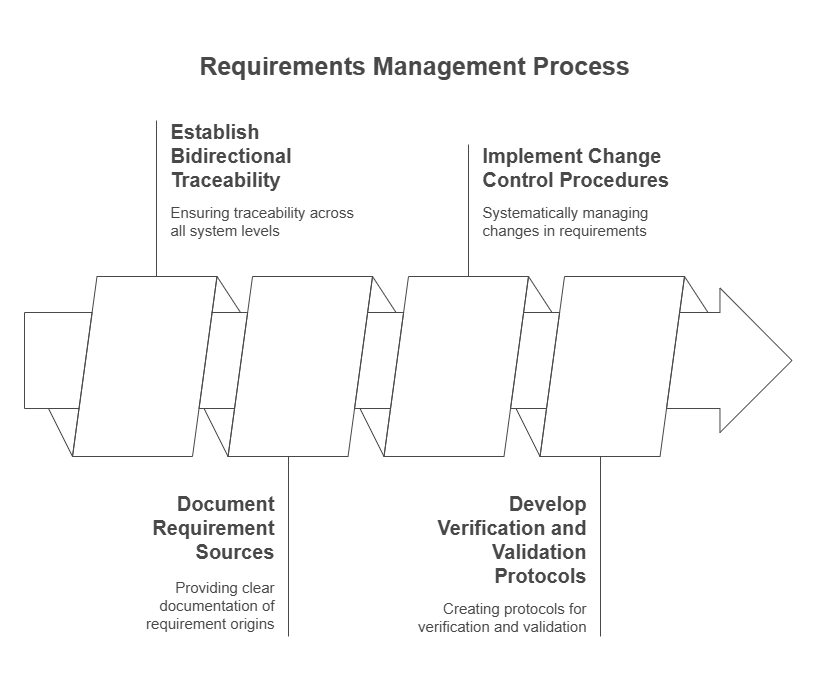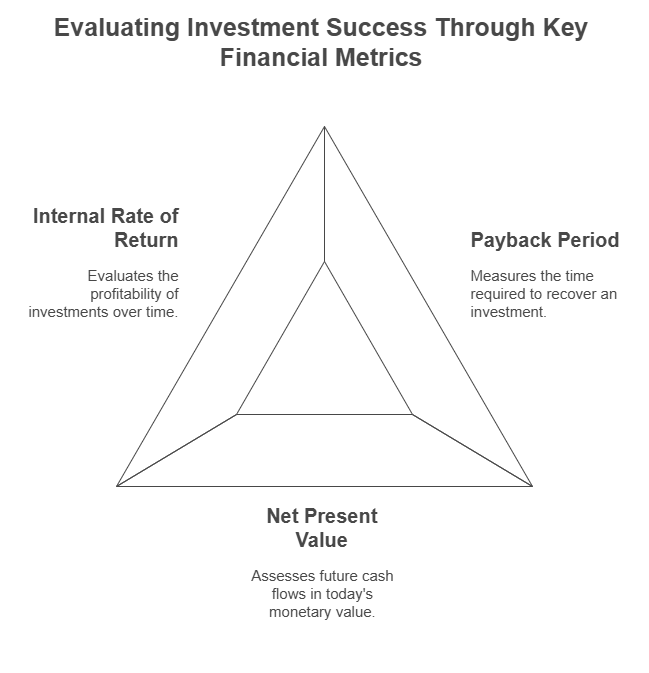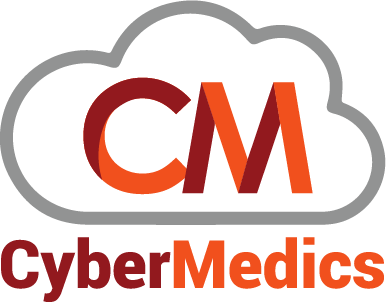
Why Standard Dms Fails: Building Custom Document Management For Aerospace Companies
A single compliance violation in aerospace can trigger fines up to $1 million per incident, while one missing traceability record can ground entire aircraft fleets. These stark realities underscore why a standard document management system often falls short for aerospace organizations.
At CyberMedics, we’ve observed how some aerospace companies struggle with conventional document control systems, especially those that fail to address industry-specific requirements. The aerospace sector demands adherence to multiple regulatory frameworks, including ITAR, DoD, ICAO, NASA, and FAA standards. Consequently, implementing a custom document management system is crucial for maintaining compliance while ensuring operational efficiency.
In this article, we’ll examine why standard document management solutions fail to meet aerospace needs and explore the essential components of building an effective aerospace requirements management system. We’ll also explore the critical features needed for proper documentation control and evaluate how custom solutions can protect organizations from costly compliance violations while supporting their operational goals.
Common Problems with Standard DMS in Aerospace
Standard document management systems often struggle to meet the complex demands of aerospace operations. The first thing to consider is that these systems must adhere to the intricate web of regulations that govern aerospace documentation.
Limited Compliance Tracking Features
Standard DMS platforms lack robust compliance tracking capabilities needed for aerospace operations. According to industry data, aerospace regulations undergo frequent updates, requiring continuous vigilance and adaptation. Additionally, traditional compliance management relies heavily on manual processes, making them time-consuming and prone to errors. Furthermore, managing multiple certifications across international regulatory bodies poses a significant challenge, as each authority maintains unique requirements.
Poor Integration with Legacy Systems
The integration of legacy systems presents a particularly complex challenge in aerospace document management. Approximately 60% of integrated circuits currently used in aerospace products will become obsolete within the next five years. In addition, production cycles of modern components are notably brief, typically lasting five years or less, which creates significant challenges for aerospace products with 30-plus year lifespans. When components become obsolete, engineers must often create entirely new designs from scratch, as finding acceptable 1:1 replacements proves increasingly difficult.
Inflexible Workflow Management
Standard document management systems frequently demonstrate rigid workflow structures that fail to accommodate aerospace’s unique needs. The aerospace sector requires handling diverse requirements, including:
- Product specifications
- Process documentation
- Contractual obligations
- Certification standards
- Legal mandates
Notably, when standardization becomes too rigid, it can limit flexibility and employee discretion, potentially leading to more errors rather than fewer. The challenge lies in balancing standardized processes with the need for adaptability in unexpected situations. Organizations that rely solely on inflexible workflows experience frequent production stoppages and risk losing customers.
Successful document control systems must strike a delicate balance between maintaining strict compliance and enabling operational flexibility. Standard DMS solutions typically fall short in achieving this crucial equilibrium.
Critical Requirements for Aerospace Documentation
Building a robust aerospace documentation system requires meticulous attention to specific technical requirements. At CyberMedics, I’ve observed that successful aerospace document management hinges on three critical pillars: version control, compliance tracking, and secure access management.
Real-time Document Version Control
Effective version control forms the foundation of aerospace documentation management. Subsequently, in a custom-built document management solution, the design can incorporate file locking mechanisms to prevent unauthorized edits during document authoring. This approach ensures that discrete versions are automatically captured throughout the authoring process, creating a complete version history up to the point of release.
Specifically, the system must support version tracking while enabling multiple users to collaborate seamlessly. Through automated updates, the platform reflects the latest information from connected systems, primarily focusing on training logs, safety protocols, and certification documents.
Regulatory Compliance Tracking
Aerospace documentation systems must align with multiple regulatory frameworks. In a custom-built solution, the design can include tracking mechanisms for expiration dates on critical documents. Automated alerts can be implemented to notify users before document expiration, helping maintain continuous compliance.
The system must demonstrate compliance with:
- ITAR (International Traffic in Arms Regulations)
- DFARS (Defense Federal Acquisition Regulation Supplement)
- AS9100 quality management standards
Secure Access Management
Since aerospace documentation contains highly classified information, secure access management becomes paramount. Therefore, the system must implement maximum data breach protection through cryptographically protected multi-factor authentication. The platform must also ensure access provisions align with federal and organizational policies while maintaining operational efficiency and creating detailed audit logs for all file activities, documenting every change, review, and approval. This comprehensive tracking enables organizations to demonstrate compliance during regulatory audits and inspections. Through automated compliance monitoring, the platform must also provide real-time visibility to identify and address gaps before they result in costly penalties.
Building Custom Document Control Systems
Creating a custom document control system demands meticulous planning and precise execution. At CyberMedics, we’ve learned that successful implementation begins with understanding the intricate requirements of aerospace documentation.
Requirement Analysis Process
The foundation of an effective custom document management system starts with thorough requirements elicitation from stakeholders. This process involves analyzing system functional requirements, interface specifications, and operational constraints. We focus on identifying conscious, unconscious, and undreamed-of requirements that might otherwise remain unstated.
The requirements management process must establish:

- Bidirectional traceability across all system levels
- Clear documentation of requirement sources
- Systematic change control procedures
- Verification and validation protocols
System Architecture Design
In effect, the system architecture must support real-time data tracking while maintaining stringent security protocols. The design incorporates advanced encryption standards and multi-factor authentication to protect sensitive aerospace documentation. In a custom-built solution, the architecture can be designed to ensure compliance with ITAR and DFARS regulations through built-in security features
The system design documentation tracks integration activities and installation steps, ultimately serving as a living document that captures all capability enhancements. As a result, the architecture supports seamless updates and modifications while maintaining system integrity.
Integration Planning
Integration planning requires careful consideration of existing systems and workflows. The process begins with a thorough assessment of current document management procedures. In particular, successful integration strategies focus on establishing stronger, long-term partnerships with key suppliers while implementing advanced data analytics and real-time tracking systems.
The integration plan must address compatibility with:
- Enterprise Resource Planning (ERP) systems
- Customer Relationship Management (CRM) platforms
- Computer-Aided Design (CAD) software
Nevertheless, successful integration depends on comprehensive training programs and detailed implementation plans. Our approach includes conducting rigorous testing phases and maintaining detailed documentation of integration procedures. Through this systematic approach, we ensure that the custom document control system aligns perfectly with existing aerospace operations while meeting all regulatory requirements.
Security Features for Aerospace Documents
Protection of sensitive aerospace documentation demands sophisticated security measures that go beyond standard encryption methods. At CyberMedics, we’ve implemented robust security features that safeguard critical aerospace data while maintaining operational efficiency.
Advanced Encryption Standards
In a custom-built software, AES (Advanced Encryption Standard) encryption can be implemented as a federal standard for protecting sensitive, unclassified information. The system supports AES encryption with key sizes of 128, 192, and 256 bits to secure data blocks. Primarily, this encryption protects data at rest, including database files and log files.
Our systems implement transparent data encryption (TDE) to protect storage media from unauthorized physical access. Simultaneously, the system maintains encryption keys in a Trusted Platform Module embedded in the hardware, preventing unauthorized data extraction even if storage media is physically compromised.
Multi-factor Authentication
The aerospace sector faces unprecedented cybersecurity challenges with employees, contractors, and partners requiring access across various IT/OT systems. In a custom-built document management suite, phishing-resistant multi-factor authentication can be implemented to align with:
- CMMC 2.0 Levels 2 and 3
- SPRS NIST 800-171 Self-Assessment
- Defense Federal Acquisition Regulation Supplement (DFARS)
Undoubtedly, this approach enhances security by requiring multiple forms of verification before granting access to sensitive documents. The system supports various authentication factors, explicitly including biometric verification, security tokens, and mobile device validation.
Audit Trail Implementation
Our audit logging systems create detailed records of all document-related activities. Comprehensive audit trails capture:
- File access timestamps and user identification
- Document modifications and version changes
- Failed access attempts and security violations
The audit system maintains firewall logs, operating system logs, intrusion detection system logs, web server logs, and database logs. Evidently, this detailed tracking enables organizations to demonstrate compliance during regulatory audits while protecting FAA’s data from unauthorized access.
The platform automatically generates alerts for suspicious activities and maintains a complete chain of documentation for potential recalls or incidents. Altogether, these security features create a robust framework that protects sensitive aerospace documentation while supporting regulatory compliance requirements.
Measuring Success of Custom DMS
Measuring the effectiveness of a custom document management system requires precise tracking of both quantitative and qualitative metrics.
Key Performance Metrics
Tracking specific performance indicators helps validate the success of custom documentation control systems. Based on aerospace industry standards, the average information worker spends five hours per week searching for documents. Our custom DMS implementation reduces this time by implementing advanced search capabilities.
Primary metrics we monitor include:
- Manufacturing quality indicators
- Control of poor quality (COPQ)
- Customer quality metrics
- Non-conformance reports
Fundamentally, these metrics align with the stringent requirements of major aerospace organizations like Airbus and Boeing. Generally, the measurement process focuses on four key perspectives:
- Customer satisfaction levels
- Financial performance indicators
- Internal business processes
- Capability and sustainable growth
ROI Assessment Framework
The return on investment for a custom document management system encompasses both direct cost savings and operational benefits. Initially, our ROI assessment evaluates implementation costs, including:
- Software and hardware expenses
- Installation and configuration costs
- Employee training requirements
Significantly, aerospace organizations implementing custom DMS solutions report reduced document handling costs. The system’s ability to streamline document workflows and automate processes leads to measurable improvements in operational efficiency.
Basically, our ROI framework examines three critical financial metrics:

- Payback Period: Typically measured in months
- Net Present Value (NPV): Evaluating future benefits in today’s monetary value
- Internal Rate of Return (IRR): Calculating benefits with time value consideration
Our aerospace clients have reported substantial improvements in document retrieval efficiency. Research indicates that efficient document management is essential infrastructure for companies dealing with information daily.
The ROI assessment also considers compliance benefits. Our custom system’s ability to track regulatory requirements and maintain audit trails has helped clients avoid potential compliance violations that could result in significant fines. Additionally, the platform’s enhanced security features and automated workflows have improved collaboration between departments while maintaining strict document control standards.
Finally, our measurement framework incorporates metrics for process integration efficiency. This approach is designed to reduce nonconformity risks while enhancing the efficiency of each process, sub-process, and activity. A custom DMS must enable product requirements to cascade throughout the organizational landscape, resulting in improved quality management and sustainable growth.
Conclusion
Standard document management systems clearly fall short of meeting aerospace’s complex requirements. Custom document control solutions deliver essential capabilities that protect aerospace organizations from costly compliance violations while supporting operational excellence.
Custom DMS solutions provide three critical advantages that standard systems cannot match. First, they offer real-time version control with comprehensive audit trails, ensuring complete documentation history. Additionally, they maintain continuous compliance tracking across multiple regulatory frameworks, including ITAR, DFARS, and AS9100 standards. These systems also implement advanced security features like AES encryption and phishing-resistant authentication that safeguard sensitive aerospace data.
Organizations using custom document management solutions report significant improvements in operational efficiency, with document retrieval time reductions and compliance violation risks nearly eliminated. These results stem from our deep understanding of aerospace documentation requirements and our ability to create systems that balance strict compliance with operational flexibility.
We encourage aerospace organizations to evaluate their current document control systems against industry requirements and consider how custom solutions could better serve their needs.
FAQs
Q1. What are the main challenges of using standard document management systems in aerospace?
Standard document management systems often struggle with limited compliance tracking features, poor integration with legacy systems, and inflexible workflow management. These limitations can lead to regulatory violations, operational inefficiencies, and difficulties in adapting to the unique needs of the aerospace industry.
Q2. How does a custom document management system address aerospace-specific requirements?
A custom document management system for aerospace incorporates real-time document version control, regulatory compliance tracking across multiple frameworks (like ITAR and DFARS), and secure access management. These features ensure continuous compliance, protect sensitive information, and streamline document workflows specific to aerospace operations.
Q3. Which security measures are essential for aerospace document management?
Essential security measures include advanced encryption standards (AES), multi-factor authentication, and comprehensive audit trail implementation. These features protect sensitive aerospace data, ensure compliance with industry regulations, and provide detailed tracking of all document-related activities.
Q4. How can the success of a custom document management system be measured?
Success can be measured through key performance metrics such as reduced document retrieval time, improved manufacturing quality indicators, and decreased non-conformance reports. ROI assessment frameworks also evaluate direct cost savings, operational benefits, and compliance improvements to quantify the system’s impact.
Q5. Why is it important for aerospace companies to consider custom document management solutions?
Custom document management solutions are crucial for aerospace companies because they address industry-specific challenges that standard systems cannot. They offer tailored features for regulatory compliance, integration with specialized aerospace software, and enhanced security measures, ultimately leading to improved operational efficiency and reduced compliance risks.
